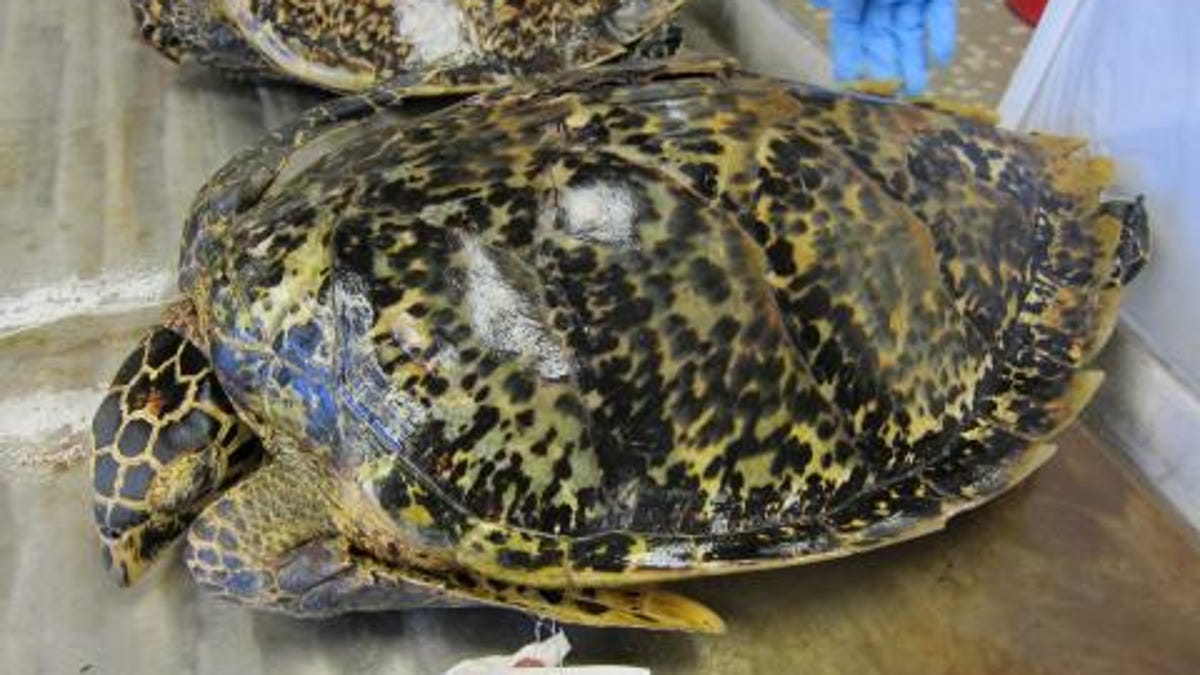Turtles' age determined by atomic-bomb fallout in their shells
Extensive US nuclear testing in the middle of the last century yields a new tool for scientists to use today in dating endangered sea turtles.
During the years spanning the mid-1950s to 1970, the US government conducted some serious atomic bomb testing above the waters of the Pacific Ocean. As a result, the corals there accumulated a lot of nuclear fallout into their structures. But the coral wasn't the only sea creature to take radioactive material onboard -- hawksbill sea turtles incorporated the material into their shells as well.
Now, a researcher at Duke University has used the nuclear fallout accumulated in the shells of these deceased turtles to age them more accurately than ever before, shedding light on why the animals are rebounding more slowly than expected in the waters around Hawaii, despite environmental protections.
"In Hawaii there are essentially two populations of sea turtles, hawksbills and greens," lead researcher Kyle Van Houtan told CNET's Crave blog. "Green turtles are far more numerous, having rebounded from their near extinction in the early 1970s, in concert with conservation protections under the ESA [Endangered Species Act]. But hawksbills were afforded the same protections and have not rebounded. We think our study points to two reasons as to why: they are relatively late in maturing, and their food base may have dwindled."
Van Houtan, an adjunct associate professor at Duke's Nicholas School of the Environment, and his team measured the level of carbon-14 in the shells of 36 deceased hawksbill turtles and pegged those levels to the known levels of the material in the surrounding corals to determine age. The levels of this material spiked during the nuclear tests during the Cold War and have declined ever since, so the the corals can be used as a kind of measuring rod.
While carbon dating organic matter is not new, Van Houtan's method used something known as bomb carbon dating. "There is a natural radiocarbon at low levels, which has a predictable signal over geological time," Van Houton explained. "Bomb radiocarbon dating tracks the dramatic spike in 14-carbon that occurred as a result of atmospheric diffusion of thermonuclear testing in the middle of the last century."
The new dating method led Van Houtan and his team to realize that female turtles reach sexual maturity much later than previously thought -- about 29 years versus 15. That fact could be one of the reasons the turtle population is rebounding more slowly from poaching for the now-illegal global tortoiseshell trade. A longer sexual maturation lead time means breeding can't happen as quickly as previously thought.
Because the turtles absorbed the bomb fallout through their diets, the team also discovered that it looks as though the decline in coral reefs in the waters around Hawaii has led to a decline in traditional food sources for the turtles including sponges, anemones, squid and shrimp, which live among the corals. This has shifted the diet of the turtles from that of an omnivore to that of a vegetarian. Such a shift could be another contributing factor to the slow regeneration of the hawksbill turtle populations.
To source the shells for his study, the team worked with law enforcement officials, federal agencies and museums. Trade in hawksbill turtle shells, which were used for hundreds of years for decorative purposes, was banned in 1977 by the treaty known as the Convention on International Trade in Endangered Species of Wild Fauna and Flora (CITES). Still, "the harvest of hawksbill sea turtles for the global tortoiseshell trade was enormous, with some estimates that 30,000 turtles were trafficked annually from 1950 to 1992," says the research paper published Wednesday in the journal Proceedings of the Royal Society B.
Having a better understanding of the way in which the creatures age and eat in the wild can help conservation efforts aimed at restoring their populations. Currently, Hawaiian hawksbill turtles are the smallest sea turtle population on the planet, says a Duke University report on the study. It also adds that "this is the first time carbon-14 dating of shell tissue has been used to estimate age, growth and maturity in sea turtles."


